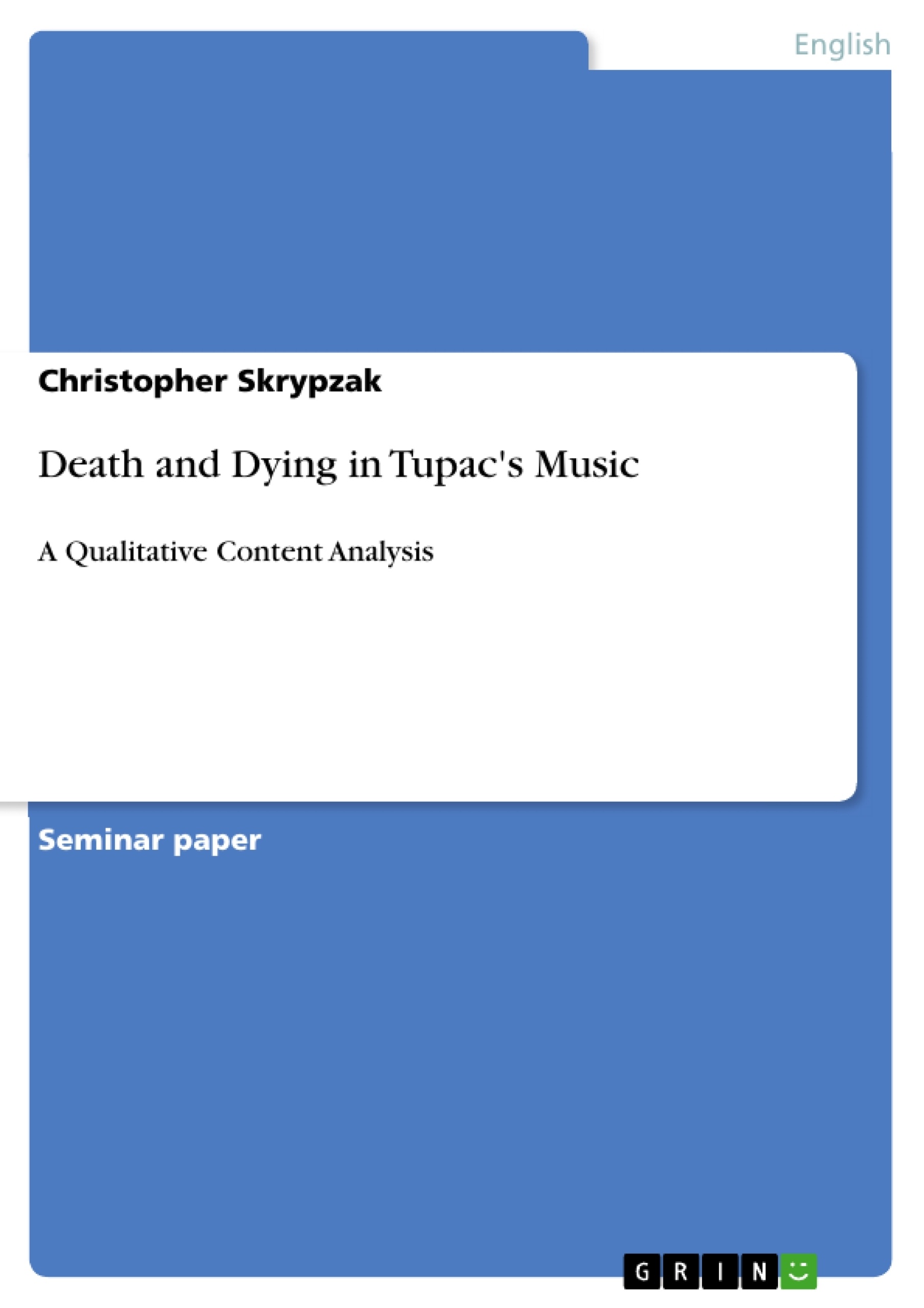Past analyses of violence in rap music mostly focused on quantitative surveys of certain semantic references, or tried to answer the question to which extent listener's musical preferences influence their relationship with violence. While approaches of this kind may have its merits in detecting general trends, they often miss to address differences in the quality of these references because they largely ignore the context in which they are made, thus, diminishing their explanatory value for cultural characteristics. The objective of this paper is three-fold: Firstly, it aims to reveal the broad spectrum of death depictions in Tupac's music. Secondly, it intends to create appreciation for the frequent thoughtful depiction he shows, as well as to raise sympathy even for seemingly careless expressions of death by trying to explain the subconscious rational behind it. This will be especially useful for readers not familiar with rap in its original cultural context. Thirdly, it will place these depictions in the broader context of American culture, thereby, revealing a continuity with political, social and cultural developments in American society at large, and African-American culture in particular. The argument will be made that rather than being an example of a counter-culture that is breaking with society's values, Tupac's gangsta raps can also be considered a direct product of mainstream culture.
After the historical background that shaped the environment Tupac grew up in is explored in chapter two, the third chapter will introduce three categories which can be used to systematize references of death in his songs. In chapter 4, notable examples of his lyrics are categorized and their context is explained with special focus being put on trends in American culture and how they influenced Tupac's biography in order to explain them. The concluding section will then discuss the possibilities an approach like this presents and identify what can be learned about culture by examining a this society's cultural products. The goal is not to solve contradictions prevalent in rap music but rather to emphasize their correlation with societies contradictions which manifest in its institutions and the cultural practices of its members
Table of Contents
- Introduction
- A Cultural History of the 70s & 80s
- Politics & The Struggle for Black Liberation
- The Emergence of Gangsta Rap
- The Media, Capitalism & Black Violence
- Developing a Typology
- Type I-Systemic Violence & Revenge
- Type II-The Street Code
- Type III-Killing it on the Mic
- Qualitative Analysis of the Depictions of Death in Tupac's Lyrics
- Conclusion
Objectives and Key Themes
The objective of this paper is to analyze Tupac's lyrics by focusing on his depictions of death. Through this examination, the paper aims to reveal nuanced facets of American culture that existed before and after Tupac's death. The paper argues that rather than solely promoting violence, Tupac's life and art can be interpreted as a reflection of the pervasive deadly violence deeply rooted in American culture.
- The impact of the Civil Rights era and the Reagan administration on Tupac's values and beliefs.
- The development of hip hop as a platform for expressing the African-American experience.
- The role of the media in both popularizing and vilifying gangsta rap.
- The correlation between American culture's contradictions and those prevalent in rap music.
- The relationship between American society, its institutions, and cultural practices.
Chapter Summaries
Chapter two delves into the social, economic, and political factors shaping the African-American experience. It examines the struggle for liberation in the aftermath of the Civil Rights era and the Reagan administration, analyzing its influence on Tupac's values and beliefs. The chapter further explores the rise of hip hop as a medium for expressing the African-American experience, tracing its roots in earlier African-American music. Finally, it examines the role of the media in popularizing gangsta rap, while simultaneously vilifying it, and explores the extent to which these dynamics reflect power relations in the United States during Tupac's lifetime.
Keywords
This paper explores the themes of death, violence, and gangsta rap in the context of American culture, focusing on the African-American experience, the Civil Rights era, the Reagan administration, and the media's role in shaping cultural perceptions. The paper analyzes Tupac Shakur's lyrics as a reflection of these themes and their implications for American society.
- Quote paper
- Christopher Skrypzak (Author), 2022, Death and Dying in Tupac's Music, Munich, GRIN Verlag, https://www.hausarbeiten.de/document/1329628


